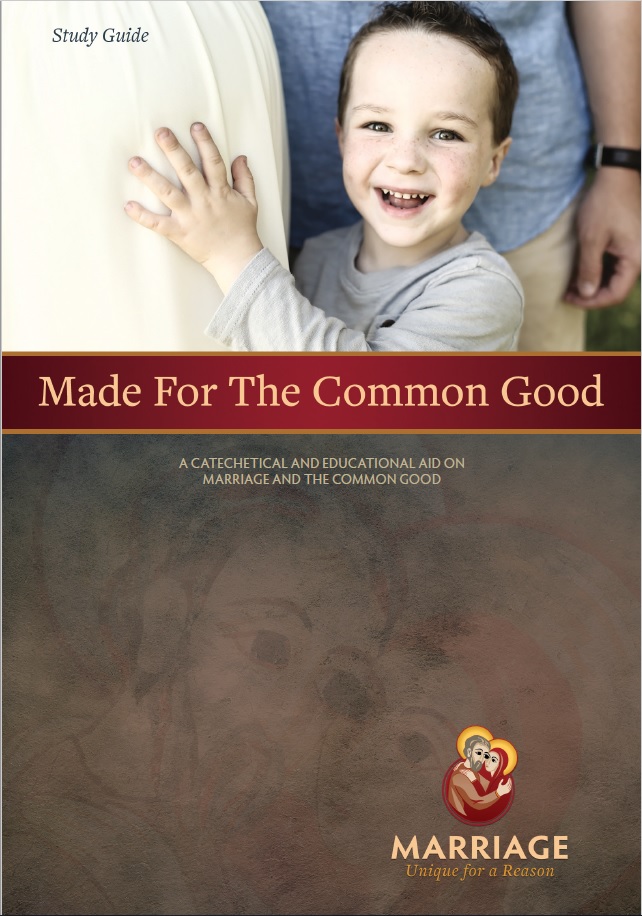Can I Get a Refund?
Stay tuned to this space for a series of videos about various topics.
In the meantime, what do you think about this short story? What does the consumer mentality toward children say about our society?
Archive
A Genetic Connection: Made for the Common Good Series
In today’s clip from Made for the Common Good, we hear from Alana Newman, who was
conceived by her mother with the contribution of a sperm donor. When Alana received information about her biological father, in the form of some “non-identifying” qualities, she immediately acted upon the information by buying a plane ticket to the country her father was originally from.
What did going to Poland do for Alana? Was it a pointless exercise?
If you’re American, chances are good that your family, somewhere down the line, is from somewhere else. Have you ever gone to visit the country your family is from? What was that experience like?
My family is Italian. The first time I went to Italy, I thought, “Wow, these people all look like me!” When I went into stores, the shop owners didn’t immediately switch to English, as they did with other tourists. Once I was dressed in a long skirt that friends joked was my “gypsy skirt” and sitting outside a church; a little girl pulled at her mother and pointed at me, asking her mother to give me money. (There are a number of Romani who beg outside churches in that area). Clearly, I blend in perfectly in Italy, despite having lived my whole life in the U.S. I experience an almost instinctive belonging there, because when I look around, I see people who look like me. We obviously share some genes!
That’s what Alana could find by going to Poland. She could sit in a café and look at people walking by and try to see her own face and body type in them. She would probably feel at least some of what I feel in Italy—instinctive belonging due to similarity in looks. Her father’s ancestry is her heritage, even though she has never met him. She shares genes with people in Poland.
If you’re interested in learning more about adults who look for information about their sperm donors, this article came out this month (February 2017), focusing on one clinic in California. The article looked into how many adults looked to connect with their sperm donor fathers when they came of age. This particular clinic uses “open-identity donation,” where this is an option once the child turns 18, but many clinics are still based on anonymous “donors” where the child has no recourse to knowing the identity of their biological parent.
Question: Do you think this situation of anonymous sperm and egg donors should be remedied? How?
Archive
Made for the Common Good Study Guide
The study guide is out for Made for the Common Good. If you liked the video, you may enjoy going deeper into its themes by reading the guide. And if you like it, please share it!
Archive
Made for Freedom: Alana Newman on Third-Party Reproduction
“The fact that connects us all, as human beings, is the fact that everybody comes from a mother and a father.”
Alana Newman speaks in today’s clip with a forceful rhetorical statement, that if we tweak this fundamental fact of human existence, we are “robbing [someone] of their humanity.” She speaks from personal experience of the pain of a child who is denied the right to know her father. Did you know that children who are born of third-party reproduction[1] do not have any rights to know who their natural father (or mother) is? Alana speaks about this later in the video, saying that when she learned that the sperm donor was Polish, she flew to Poland so that she could know something of her heritage in that way. Her experience led Alana to start a project called Anonymous Us, a story collective of children from third-party reproduction. She also put a number of these stories into a book that was recently published.
Opportunity
Today, take the opportunity to think about what knowing your natural parents, and thus their families as well, has meant to you; or, if you have been unable to know one or both of them, consider this loss and how you have been able to overcome it. Think of a single parent that you know, and ask yourself if there is a way for you to help them as they raise their child, particularly if you can act as a mentor in the place of a missing parent. While you can never replace that loss, you could help the child navigate it.
[1] Third-party reproduction is the term used to describe when the reproductive faculties or material of a third person (whether this person is known to the person/couple or not) are used in some way to “make” a child for the other person/couple. The most common form of third-party reproduction is artificial insemination, in which a man “donates” his sperm (he is paid for this), which is then used to fertilize a woman’s ovum. Other forms use a “donated” egg or even an embryo of another couple.
